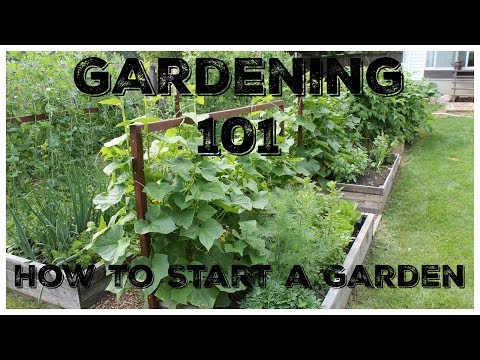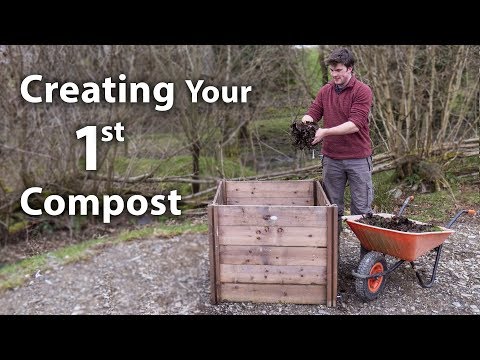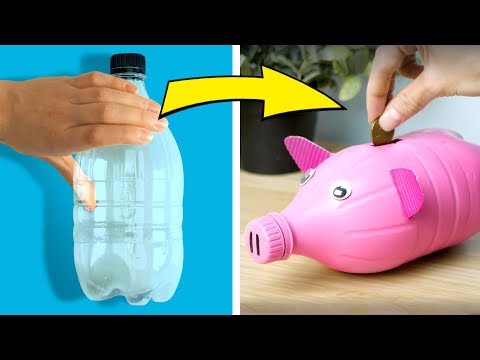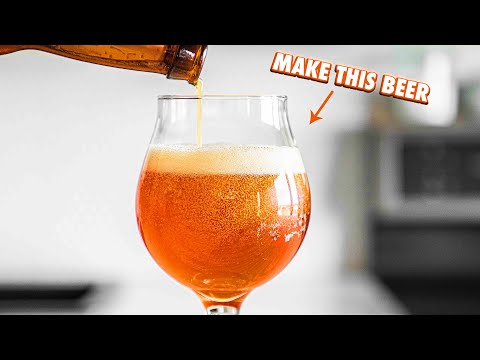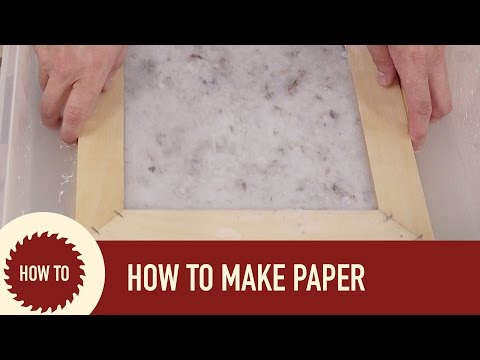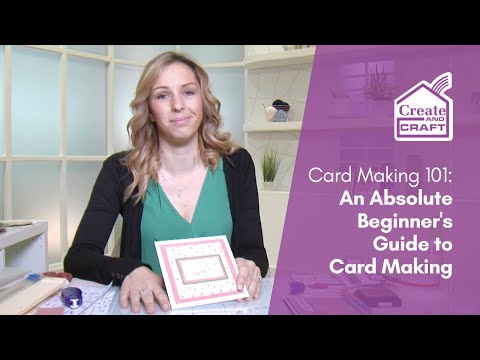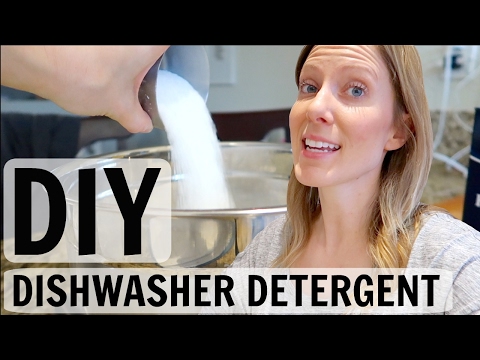29 Eco-Friendly Activities to Do at Home
Impactful Ninja is reader-supported. When you buy through links on our site, we may earn an affiliate commission.
Learn more
Learn more
.
Hey fellow impactful ninja ? You may have noticed that Impactful Ninja is all about providing helpful information to make a positive impact on the world and society. And that we love to link back to where we found all the information for each of our posts. Most of these links are informational-based for you to check out their primary sources with one click. But some of these links are so-called "affiliate links" to products that we recommend. First and foremost, because we believe that they add value to you. For example, when we wrote a post about the environmental impact of long showers, we came across an EPA recommendation to use WaterSense showerheads. So we linked to where you can find them. Or, for many of our posts, we also link to our favorite books on that topic so that you can get a much more holistic overview than one single blog post could provide. And when there is an affiliate program for these products, we sign up for it. For example, as Amazon Associates, we earn from qualifying purchases. First, and most importantly, we still only recommend products that we believe add value for you. When you buy something through one of our affiliate links, we may earn a small commission - but at no additional costs to you. And when you buy something through a link that is not an affiliate link, we won’t receive any commission but we’ll still be happy to have helped you. When we find products that we believe add value to you and the seller has an affiliate program, we sign up for it. When you buy something through one of our affiliate links, we may earn a small commission (at no extra costs to you). And at this point in time, all money is reinvested in sharing the most helpful content with you. This includes all operating costs for running this site and the content creation itself. You may have noticed by the way Impactful Ninja is operated that money is not the driving factor behind it. It is a passion project of mine and I love to share helpful information with you to make a positive impact on the world and society. However, it's a project in that I invest a lot of time and also quite some money. Eventually, my dream is to one day turn this passion project into my full-time job and provide even more helpful information. But that's still a long time to go. Stay impactful,Affiliate Disclosure
Why do we add these product links?
What do these affiliate links mean for you?
What do these affiliate links mean for us?
What does this mean for me personally?
![]()
We’re all looking to do our part for the planet. And if you are looking for more eco-friendly activities to do at home and to adopt a more environmentally conscious lifestyle in general, then you’ve come to the right place.
There are many eco-friendly activities to do at home, such as planting a garden to help offset carbon emissions and provide flowers for bees to pollinate with. You can also make upcycled items, follow guidelines for home appliance use, create a home recycling system, and even brew your own beer.
In this article, I’ll give you a list of 29 eco-friendly activities you can do right at home that will help make the planet a little happier and a cleaner place for all of us to live. Keep on reading!
Activities to Create a Positive Ecological Impact
Plant a Garden
Growing your own fruits and vegetables is often an under-appreciated task. Many feel it is too tedious and drawn out to be exciting. Not only can gardening be fun, but it can also be extremely rewarding–for both you and the environment.
Even if you don’t have a large yard or the land available, you can use large terracotta or ceramic pots and the like to create a garden space. Or, if no land is available, you can consider window gardening, vertical gardening, or even rooftop gardening–all are great options to get around the issue that work just as well. You can even take that extra eco-step and upcycle plastic bottles to make hanging planters and the like.
If preferred, you can take the garden indoors. Smaller plants like herbs (basil, oregano, etc.) can be planted in mason jars, which make for a fun addition to the kitchen counter–and are super convenient come cooking time. Shopping from local farms and food suppliers is an eco-friendly step to take, but the next step is being your own supplier of food.
If growing fruits and vegetables isn’t your idea of a fun garden, consider medicinal plants like ginkgo, echinacea, and lavender that you can use for some homeopathic therapies. Lavender is also a flower that bees love because of their abundant nectar. And speaking of bees…
Try Your Hand at Beekeeping
Bees are extremely important to the ecosystem as they are responsible for over 80% of the world’s plant pollination activity. In fact, nearly ⅓ of our food comes from honey pollination. Bees will indirectly pollinate the areas they travel collecting nectar for honey, which spurs the growth of new plants and drives the natural environment’s overall preservation.
Building and maintaining an efficient and successful colony of bees is a fascinating activity, but it can be a bit of a challenge (although it does reward you with free honey). If this interests you, it is recommended you do proper research before you start or even seek out someone who has practiced beekeeping to help you out.
Make a Compost Bin
Help to reduce food waste by using your leftover scraps to make compost. This can be used in your garden instead of those nasty, chemical fertilizers, which are no good for you or the environment.
You can find a few variations online, but you will need a bucket or bin with a lid for starters to make a compost bin. Holes need to be poked into the sides and base of the bucket, and you will also need loose soil, paper, and buttermilk (or water) to add to the food scraps.
Add fruit and vegetable peels, used tea leaves, or coffee grounds in the bucket and place in a shady area in your yard or patio. Add paper to the food scraps and layer with soil. Sprinkle with buttermilk every four or five days to maintain moisture and turn the pile to aerate the mixture.
You can add kitchen scraps, soil, and paper every few days until the bucket has been filled. When that has happened, give it a top layer of soil, and cover it to sit, untouched for 4 weeks. After a month, you will have a wonderful compost that your garden will love.
Create a Home Recycling System
If you are still just throwing everything instead of recycling, there’s no time like the present to start. Even if you already recycle, you can always consider adding additional bins to further separate what may otherwise be considered trash.
Consider a bin in which to collect “clean trash” for upcycling and craft projects, and don’t forget about things like old electronics or e-waste. Make straight-forward labels marking what should be put in each bin so everyone in your household knows what should go where.
In general, e-waste management takes a pretty hard toll on the environment. Recycling e-waste helps reduce these damages, but it has to go through a strictly regulated process to be successful. Thousands of retailers and manufacturers of consumer electronics nationwide sponsor or operate as a reputable site, which can be found by asking a few questions to your favorite search engine.
However, even the reduced effects that recycling e-waste has on the environment are still pretty bad. (Indeed, it is the unfortunate catch-22 of technological advancement.) Instead, you may wish to consider upcycling your electronics by using them for craft or, if you are tech-savvy, reusing or selling “scrap parts” that are still functioning.
Make Your Own Zero Waste Products
If you aren’t already familiar with zero waste products (or even if you are), it’s important to know that embracing the spirit and idea behind them is just as important as using them. A zero-waste lifestyle takes all the basic eco-friendly principles (reduce, reuse, recycle) and applies them to all facets of life. It requires a thorough self-audit of one’s lifestyle and even making just a few simple changes in your home can have a significant impact.
The zero-waste movement has taken on steam, and these days you can find plenty of great products online. Check out Etsy for some unique homemade products. Or better yet, why not make your own zero-waste products? Things like toothpaste, deodorant, cleaning products, and more are a few easy steps away, and the internet is filled with great recipes and how-to tutorials that can inspire and assist you.
Undertake an Upcycling/ DIY Project
One of the best ways to recycle broken, old, or tired items is by upcycling them into something fresh and new. This helps protect landfills from growing as quickly and spares raw materials being used that would be otherwise needed for manufacturing.
It’s fun and easy to turn old T-shirts into tote bags, or plastic bottles into planters, or plastic bottles into storage containers, or plastic bottles into LED-tealight holders (plastic bottles are an overwhelming landfill issue these days, and, as you can see, many people are coming up with creative reuses for them).
Upcycling things to make jewelry can be lots of fun and is a great way to reuse items that you may have otherwise thrown away. You can use pieces of broken jewelry, buttons, coins, papers, or felt scraps–anything you have just sitting around the house is at your disposal. Just let your creativity run wild.
When taking on a DIY project and you require materials or tools, be sure to buy locally and search for things that are made of sustainable materials. And make smart, eco-friendly choices like bamboo, wood, or metal instead of plastic, for example.
Sell Upcycled Crafts on Etsy
If you love upcycling or making other eco-friendly items, why not share them with others? Etsy is a popular online marketplace of hobby-entrepreneurism for millions around the globe where people come to find unique items that have been crafted with love. Share your awesome projects with the world, have an impact on the environment, and maybe inspire a few people to go green in their lives.
Pick Up Trash Around Your Neighborhood
Granted, this eco-friendly activity isn’t done at home but rather around your home. Nonetheless, it is an easy way to contribute to cleaning up the environment–just outside of your own backyard. Whether you live in a big city or small country town, trash will find its way onto the ground in places people gather, which can affect wildlife and the surrounding environment overall.
Helpful tools come cheap, like the Ettore Trash Picker Debris Nabber or Vive Folding Reacher Grabber 32 Inch – Extra Reach Extender, and make this selfless, eco-friendly activity super easy to do.
Brew Your Own Beer
If you do a little research on some of your favorite craft beers, you may be a bit disturbed at some of the figures you find surrounding the carbon footprint their manufacturing processes leave behind. Homebrewing requires far less energy and is a cheaper way to enjoy a good ale at that.
Make Your Own Recycled Paper
Cut down on needless waste by recycling unwanted paper products into fresh, usable paper right at home. It’s a fun DIY craft resulting in a unique material that makes for a wonderful gift, homemade greeting card (see below), or whatever your paper needs may be. Any paper that doesn’t have a shiny, waxy coating on it made into recycled paper.
Make Homemade Greeting Cards
Now that you have all that beautiful, recycled paper, make some greeting cards out of it to give on special occasions. They are received wonderfully and you are eliminating the need for more trees to be cut down to make new paper. Plus, think of all the personal emissions you’d be cutting down from not having to run out every time you need a card for someone.
Activities to Reduce Your Negative Ecological Impact
Cook More Plant-Based Dishes
If you decide to plant a food garden, you’re going to have a bounty of fresh produce on your hands, so you may as well learn to cook with it! But as it were, adding just one or two vegetarian meals to your weekly menu is a great way to help the environment because you are participating in a more sustainable food chain. It requires far fewer resources to grow and supply fruits and vegetables than it does to raise animals for dairy products and meat.
Cut Back or Eliminate Microwave Use
While the microwave provides a quick way to “cook” food (and many of those frozen meals can be mighty scrumptious), unfortunately, the environment is suffering consequences. According to The University of Manchester, the carbon dioxide emitted annually by microwave usage in the EU is equivalent to 6.8 million cars.
You can lessen the effect by adjusting cooking times and such, but truth be told, the microwave is just no good. Food is actually stripped of all its nutrients, and eating food that was prepared in the microwave causes a myriad of issues like emotional instability, memory loss, decreased intelligence, and more. It’s all a part of healthy, fresh eating, and the microwave literally kills that. Think about it: you are using nuclear energy!
Scientists have conducted many studies on the effects of microwave radiation on many life forms. They observed that when water which was heated in the microwave (and then allowed to cool) was used on plants, it would cause nutrients in the soil to deteriorate, seeds of the plant to weaken, and lead to the early death of the plant in several instances.
If you can, cut out the microwave from your kitchen duties altogether. There are so many ways to cook these days, and with how bad the microwave is for both you and the environment, it really shouldn’t be considered at all in an eco-friendly lifestyle.
Invest in a Pressure Cooker
Pressure cookers are great because they can cook food in half the time compared to other cooking methods. But this reduction in cooking time also translates to a reduction of energy used to operate cooking devices. And since you are just using water to make steam to cook under pressure, food is prepared healthily.
This is an easy triple win: fast, healthy, and eco-friendly.
Plan Eco-Friendly Remodeling for Your Home
Thinking about putting some investments and upgrades into your home? Consider planning an eco-friendly renovation and make some earth-friendly and sustainable choices. Everything from flooring to insulation to appliances have environmentally friendly options, and it all adds up to make a big difference.
Use Natural Light Whenever Possible
Rather than walking through the house, flipping switches every morning, instead, trek out from your bedroom opening blinds and curtains along the way. Sunlight will give a warm, vibrant ambiance to your home as well as provide natural heat. You could even consider installing skylights and shutters throughout your home.
Switch Off or Unplug Electricity When Not Needed
This should go without saying, but it’s easy to leave lights on in adjacent rooms or keep the toaster plugged in, and you should work to correct this bad habit if you haven’t already. But this also extends to things that are on standby or sleeping modes such as computers, cable boxes, smart speakers, and the like.
These items are still using electricity to be available at your beck and call, but you can save that energy by unplugging these items completely as well when not in use. Most tech boots-up quickly these days, so it won’t cause that big of an inconvenience anyway.
Use Solar Power (if Practical)
If you live in an area that gets a lot of open-sky sunshiny days, then investing in solar panels might be a good option for you. They can help reduce your dependence on electricity from ‘the grid,’ or you can use them to store energy in batteries and generators.
Identify and Repair Leaky Faucets and Toilets
Besides being annoying, the slow drips of a leaky faucet or a running toilet can waste hundreds if not thousands of gallons of water a year that you pay for. According to the EPA (Environmental Protection Agency), ten percent of homes in America have leaks that waste upwards of 90 gallons or more per day.
Common leaks occur in fauces, toilet flappers, and other leaky valves. If you find any leaks, repair them (or call a plumber) as soon as possible. Many problems are easily fixed and it immediately helps to conserve water and reduce your water bill.
Examine all pipe fittings and faucet gaskets in your home to check for surface leaks. If there is any water on the outside of these areas, you have a leak. An easy trick for identifying leaks in a toilet is to place a drop or two of food coloring into the toilet tank and wait 10 minutes to see if any color shows up in the bowl. If it does, there is a leak. (Make sure to flush immediately after this test so you don’t stain your tank.) Repair leaks (or call a plumber) as soon as possible.
Take Shorter Showers
Every minute you spend in the shower can cost you as much as 150 gallons of water a month. Challenge yourself to take as quick and efficient a shower as possible. Of course, if you really want to commit to doing all you can, an ideal bathing method is to fill a washbasin with just a few liters of water and sponge yourself clean.
Use Cloth Napkins and Hand Towels
Paper towels are incredibly convenient, but it’s not hard to see how they fail to be eco-friendly. And while you don’t need to give them up completely, it’s better if you just use them sparingly for specific tasks. Using hand towels, cloth rags, cloth napkins, and the like is much better for the environment.
If the idea of giving up your paper towels is making you question this whole eco-friendly thing altogether, the Bambooee Reusable Bamboo Towel is an incredible, eco-friendly paper towel that you can launder in the washing machine. As seen on Shark Tank, these paper towels are made from bamboo and are even stronger and more absorbent than regular paper towels. And each sheet can be washed up to 100 times!
Limit Laundry Days
Your washing machine will consume the same amount of energy to wash a large load as it will to wash a small load. Do the environment and yourself a favor and only run the machine when you have full loads. If this means you go a few days without doing the laundry until your household has filled the machine, then so be it.
Wash Laundry in Warm or Cold Water
When you finally run the washing machine, you can use one-tenth of the energy required to run it simply by switching from hot water to cold. Energy Star states that 90% of the energy used in washing machines comes solely from heating the water. Even just switching to warm water cuts energy use in half. Besides, hot water will actually help set many stains and is only useful when dealing with grease and oil.
Line Dry Your Laundry
Another great energy and money saver is to ditch the dryer and line dry your clothes out in the sun instead. A clothes dryer actually uses more energy than a washing machine, a dishwasher, even a refrigerator. Besides, sunlight can help to remove stains and, in fact, sanitize your laundry, so the additional investment this task takes on your part will definitely pay off.
Skip Dishwasher Pre-Rinsing
Contrary to what you may have heard, pre-rinsing your dishes before placing them in the dishwasher is unnecessary as dishwashers are more than capable of handling your dirty dishes without such assistance. All pre-rinsing does is wastes your time and wastes water. Simply scrape leftover food into the trash or compost and load the dish straight into the dishwasher.
Only Run a Full Dishwasher
Limit the amount of energy and water you use by maximizing the dishwasher’s cycle and only run it when you have a full load of dishes. This doesn’t mean you have to crowd and cram your dishes in there. No, in fact, this will backfire on you and keep items from coming clean. Just load the racks properly but completely before starting the cycle.
Make Your Own Dish Detergent
Skip the patented chemicals and their harmful emissions going into your home and make your own dish detergent instead. To make a batch, simply mix 1 cup of washing soda or baking soda with 1 cup borax, ½ cup citric acid, and ½ cup of kosher salt. A heaping tablespoon per load will be enough. Simply put some vinegar into the rinse-agent dispenser and you’re good to go.
Have “Screen-Free” Days
Some technology is unavoidable these days, and some are arguably a necessity. But that doesn’t mean we can’t limit our use of many items, such as TV, internet, and cell phones–which are the three of the most time-wasting, mind-numbing, soul-robbing culprits we have working against us in the way of mental health, and they also play a huge part in destroying the environment.
But if their alluring, addiction-inducing characteristics weren’t enough, keep in mind that every lit screen, every text, every call, every video–all of it–is being supplied by a powerful data center that consumes a ton of energy in order to serve you. You can help reduce this energy consumption by reducing your consumption of such electronics. And in doing this, you may find yourself with a little time on your hands–family time, that is.
Sit down with the family calendar and schedule special screen-free days for your household. On these dates, strive to keep televisions and computers turned off and keep cell phones tucked away–somewhere like a closet or anywhere out of sight and separated from you would be ideal.
Use this time for DIY projects or to plan a special family outing. Sit around the family table and play games or put a puzzle together. Better yet, take a hike and get closer to nature. It’s a great way to bond and create memories, and you’re being kind to the environment as well!
Step Up to Inspire Others
If you have some great eco-friendly lifestyle tips and are truly passionate about the environment, you may want to consider speaking up to teach others what you know. It’s never been easier to start a blog these days, or why not make some videos on YouTube or start a podcast? You can give gardening tips, lecture about the air pollution in China and India, show step-by-step upcycling–anything you know you’re best at.
The more people know how important certain issues are or how easy eco-friendly living can be, the more they will be willing to change their habits as well. You can even set up ways to earn ad revenue and the like from your work and donate your profits to your favorite environmental charity or foundation.
Final Thoughts
With so many ways to be environmentally conscious, it’s easy to find eco-friendly–and fun–activities to do at home that will help improve the planet. With a few eco-renovations to your house or changes in your cooking or cleaning habits, you can have a significant positive impact on the environment.
Stay impactful,

Sources
- Facts.net: 120 Surprising Bee Facts That You Never Knew About
- The University of Manchester Research Beacons: Energy
- The Odyssey Online: How Your Microwave Is Killing You
- SpringerLink: The effect of externally applied electrostatic fields, microwave radiation and electric currents on plants and other organisms, with special reference to weed control
- Amazon: Ettore Trash Picker Debris Nabber
- Amazon: Vive Folding Reacher Grabber 32 Inch – Extra Reach Extender
- Wikipedia: Electronic Waste
- Almost Zero Waste: 142 Zero Waste Products: Ultimate Beginners List of Zero Waste Swaps
- Better Homes & Gardens: Eco-Friendly Remodeling
- The United States Environmental Protection Agency Website
- EPA.gov: Fix a Leak Week/WaterSense
- Amazon: Bambooee Reusable Bamboo Towel
- IMDb: Shark Tank
- Energy Star: Laundry Best Practices
